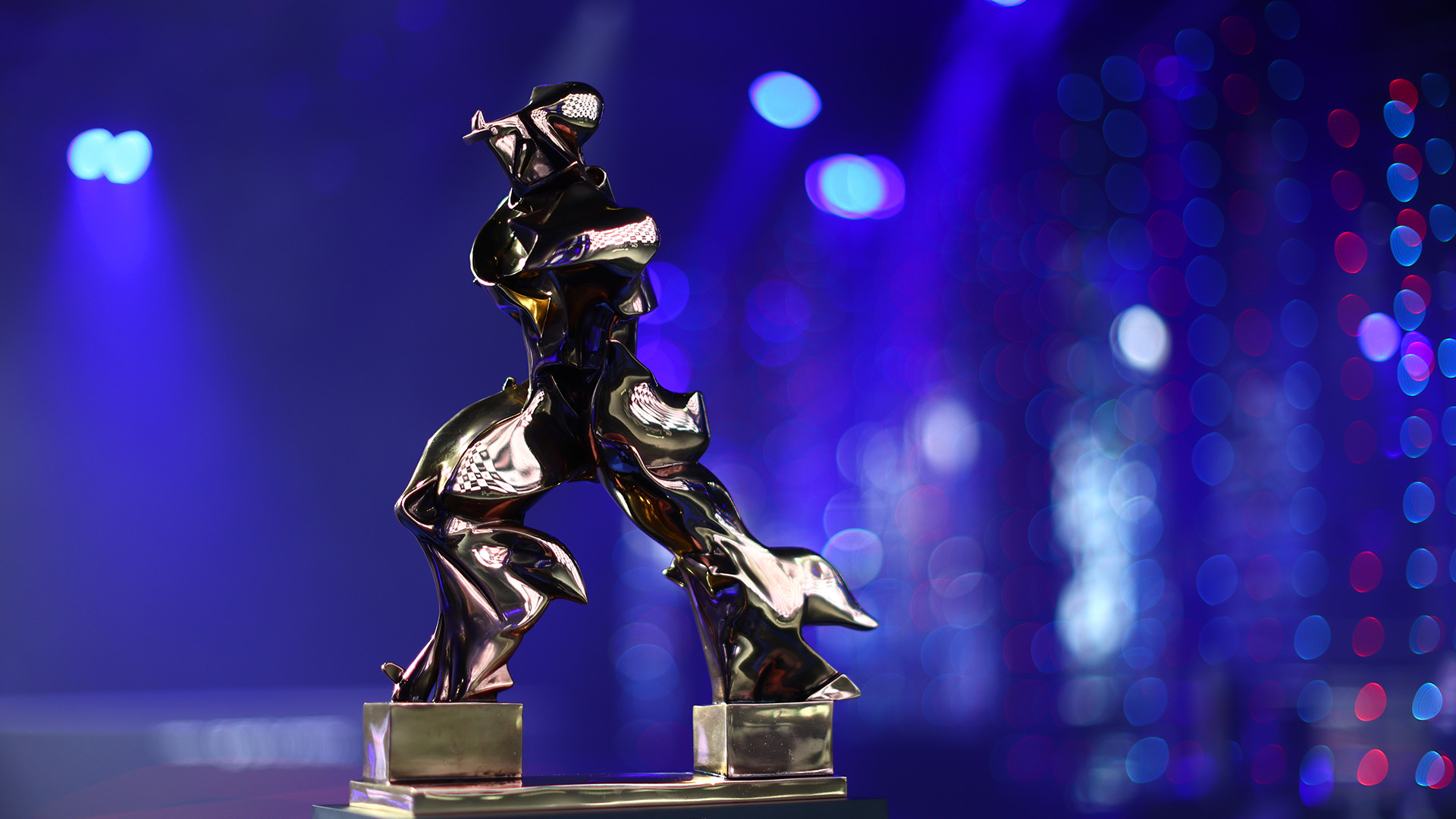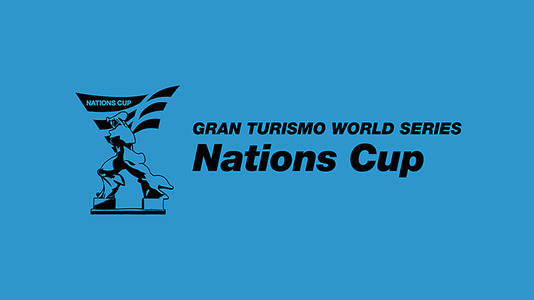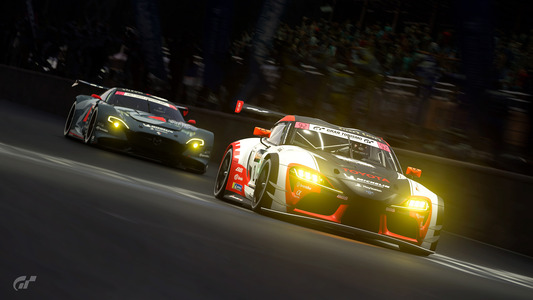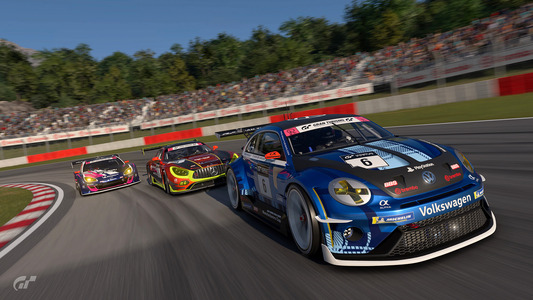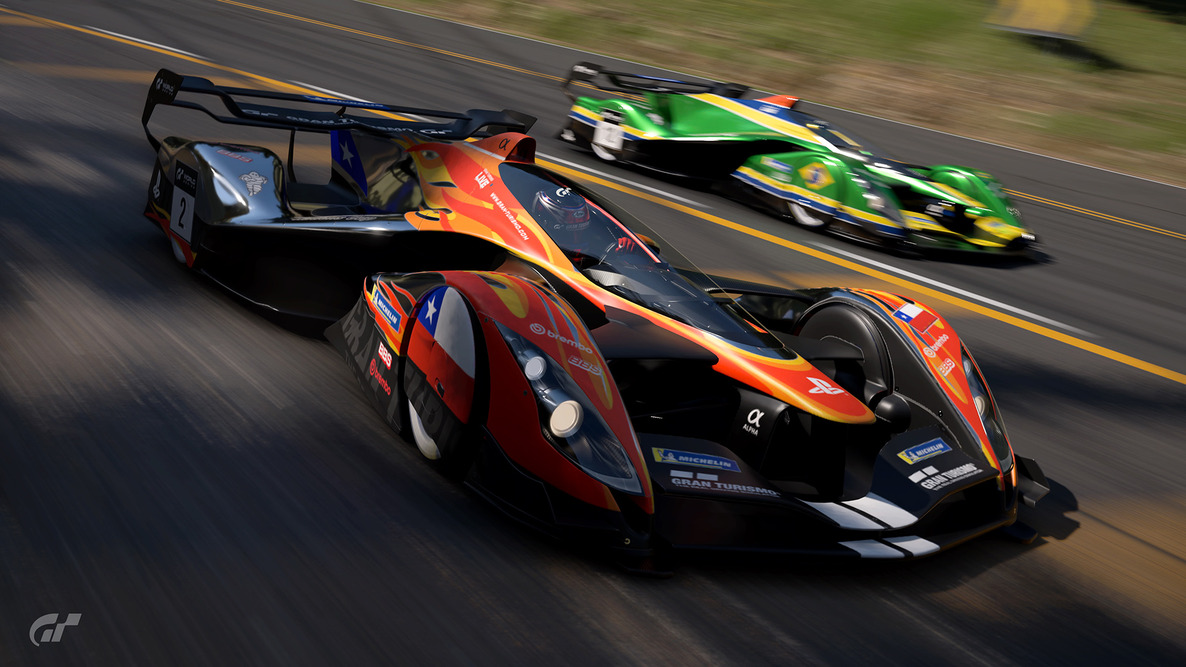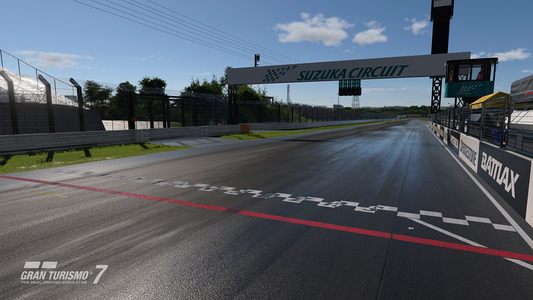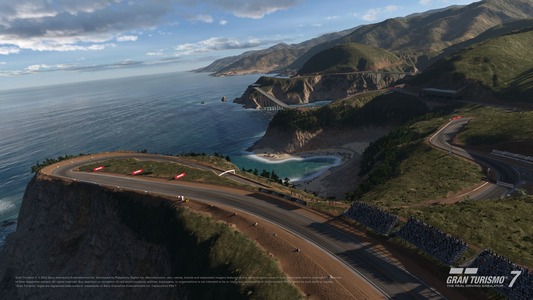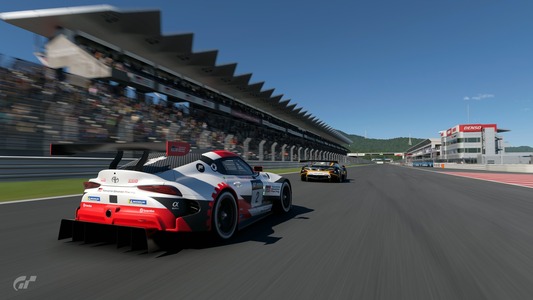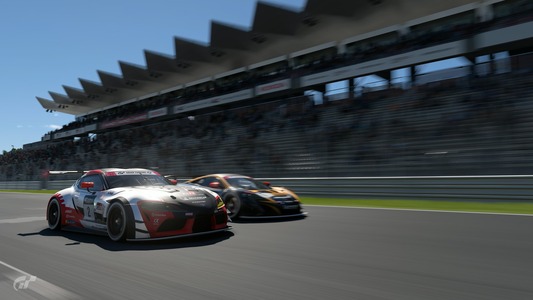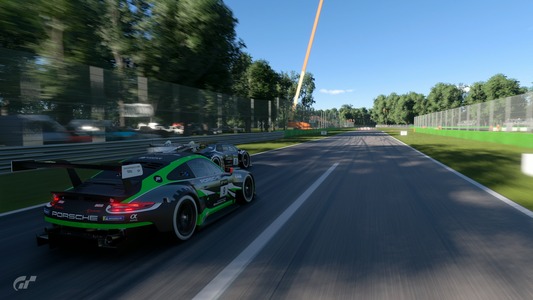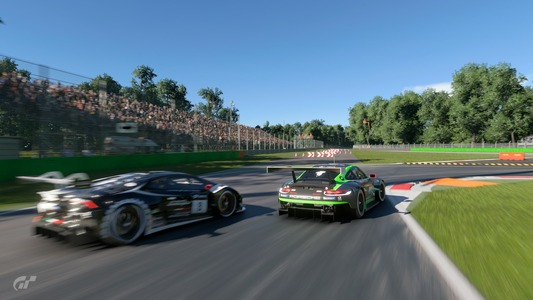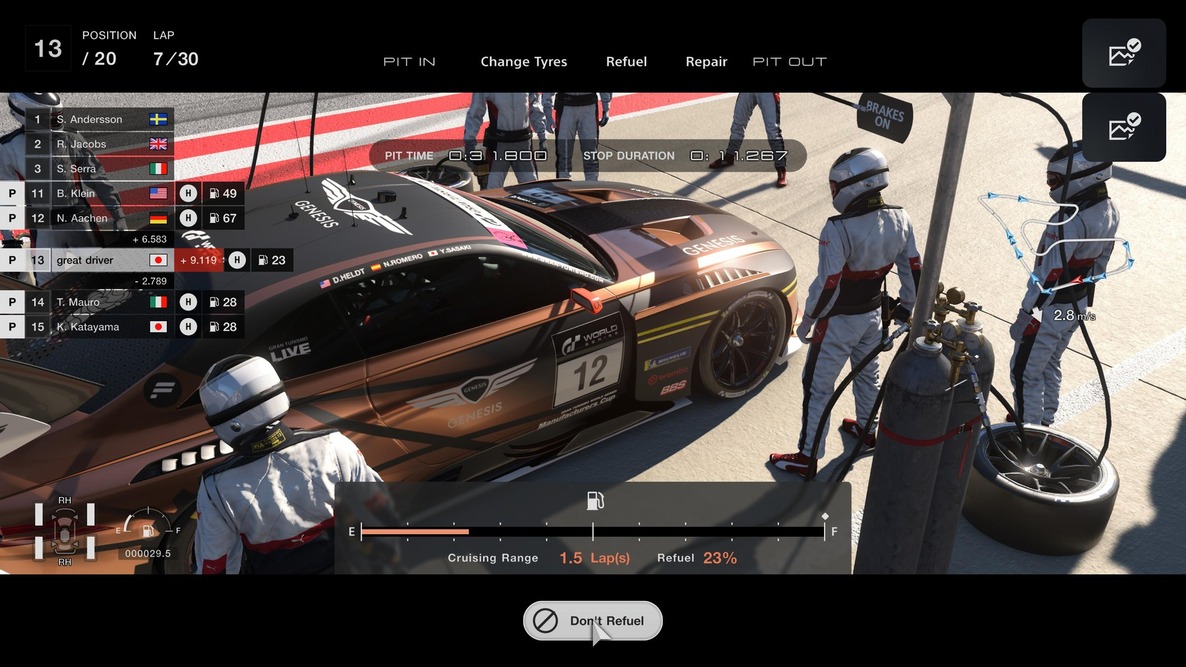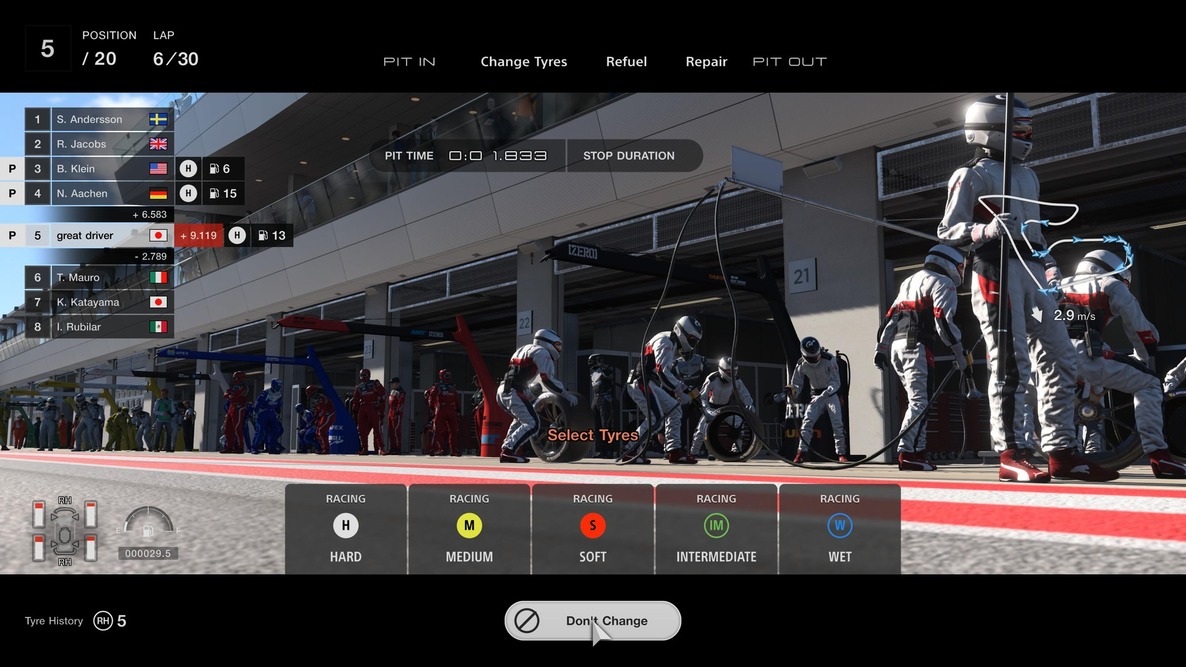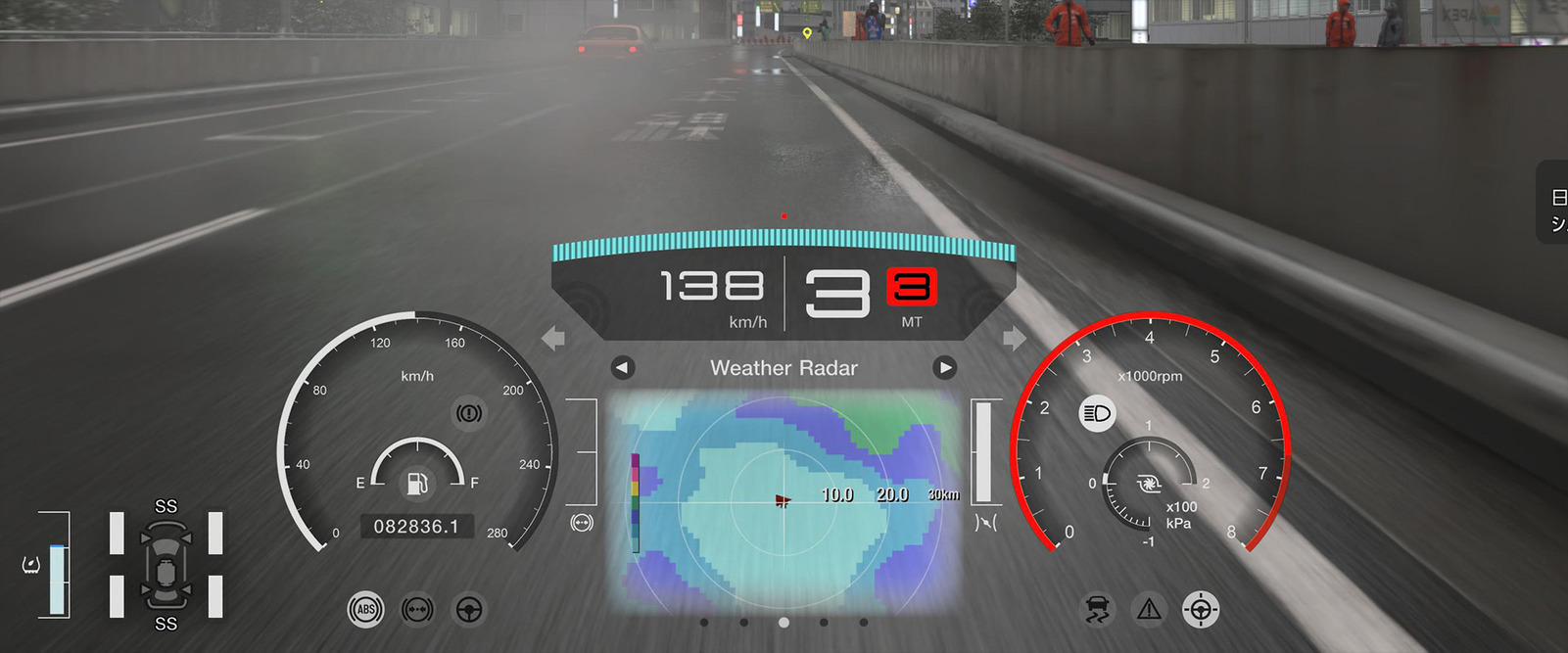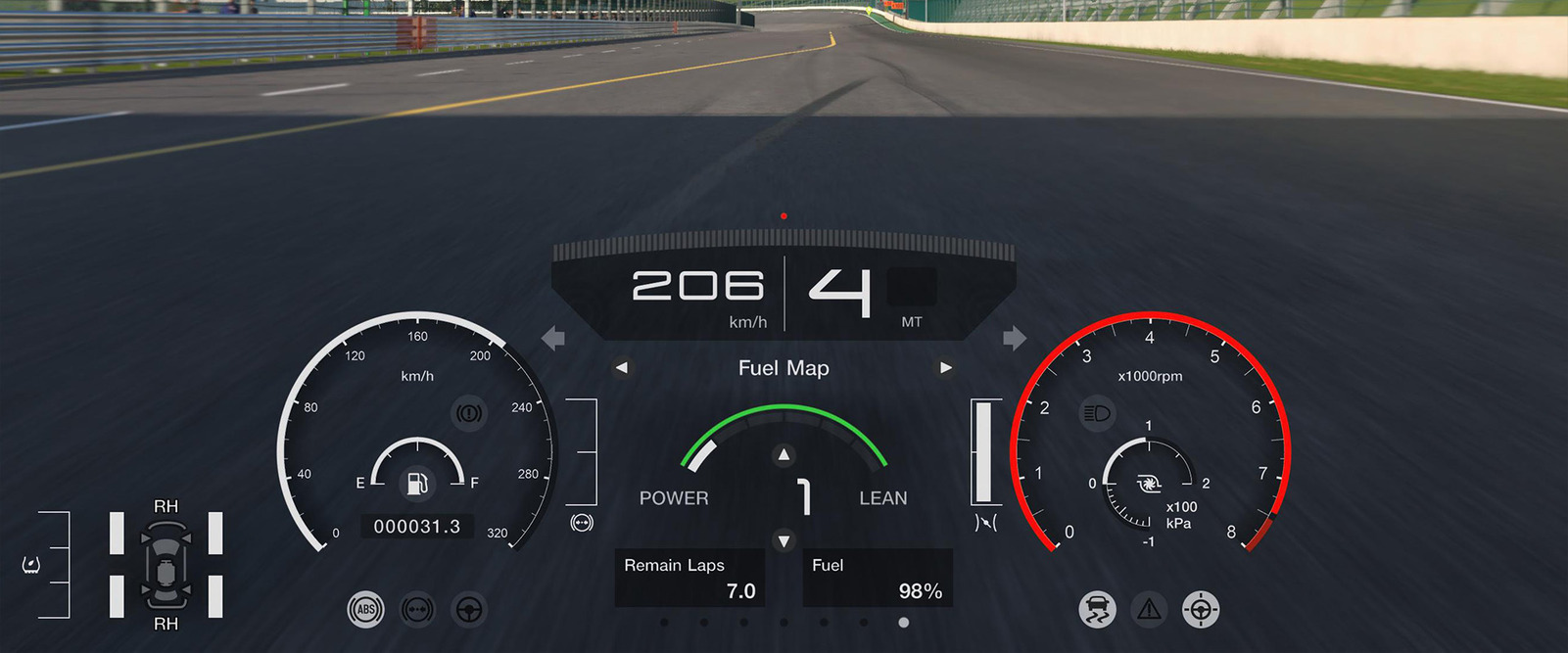"Gran Turismo World Series" World Finals Beginner's Guide
The Gran Turismo World Series (GTWS) is a championship in which Gran Turismo players all over the world have a chance to prove their skills. Those who perform well in the online races advance to the World Series Showdown and World Finals, the only live events where they battle head-to-head in front of a jam-packed crowd. This guide will highlight some of the things to look out for in the upcoming World Finals, as well as a basic rundown of the rules for those watching our broadcasts for the first time. It’s all you need to get up to speed!
What races will be held?
Manufacturers Cup
This global live event features two race tournaments. First up is the Manufacturers Cup that pits 12 top manufacturer teams against each other, including those from our official partners Toyota, Genesis, and Mazda. The rest of the field is made up of the top teams from the online series. Races will be driven by 3-man teams with driver changes.
Nations Cup
The main event of the weekend is the Nations Cup, in which drivers compete for their home country/region. In this always thrilling live event, 12 teams, including host country Spain, make up the field. Previously, the Nations Cup was an individual competition, but this year, it has evolved into a team event with each country fielding a 3-man lineup, not unlike the Manufacturers Cup. Get ready for some intense races, where the outcome is never expected!
What cars will be used?
Two types of cars will be used at the World Series Showdown. They are grouped by Gran Turismo 7 classifications.
Gr.3 Cars (Group 3 Cars)
Cars in this category consist of race cars based on regular road cars, and this is the category that will be used in the final race of the Manufacturers Cup. These cars are rear-wheel-drive (rwd) and weigh between 1200kg and 1300 kg. They produce roughly 500 to 600 horsepower, which makes them more powerful and lighter than your normal road car. The Gr.3 cars also feature aerodynamic parts such as large rear wings that provide excellent downforce (the force that pushes the car onto the track surface), allowing them to handle better than their road-going counterparts. You'll no doubt find many of the Gr.3 race machines familiar because they're based on the cars you see on public roads every day! Do you happen to drive one of them?
X2019 Competition
The X2019 Competition is a single-seat, futuristic race machine created through a special project between Red Bull Racing and Gran Turismo. Belonging to the Group X category (extreme vehicles that do not fit in any existing race category), the X2019 Competition will be featured in the final race of the Nations Cup. For the Grand Finals, it has been modified to provide more competitive wheel-to-wheel action, enabling drivers to display their true ability. The X2019 weighs just 650 kg, while its engine produces 800 horsepower, meaning that it's an absolute monster that requires the most talented drivers to master it.
Which tracks will they race on?
The venue for the races will consist of two types: real-world circuits and Gran Turismo 7 original circuits.
The real-world tracks will include legendary circuits that are very familiar to motorsports enthusiasts all over the world, such as Suzuka and Spa-Francorchamps. If you watch a fair share of real-life races, then you'll no doubt recognize some of the tracks that appear during the event.
The Gran Turismo 7 original tracks exist only in the digital world of GT7, using fictitious locations from around the world. You'll also see that they feature multiple layouts, making it easy to tailor a track to specific race events. The main difference between real-world circuits and GT7 originals is that the latter are usually wider, encouraging more head-to-head battles in races.
Things to look out for: Race tactics
Auto racing is a sport in which you try to get past your opponents and work your way up the running order. The goal is to cross the finish line before everyone else. That being the case, how do drivers improve their position in a race?
Overtaking
Overtaking is one of the most thrilling aspects of car racing. You'll most likely see passing maneuvers on long straight sections (straights) where drivers can get close to the car in front to benefit from a reduction in drag. This process is called drafting or slipstreaming. Drivers must keep a close eye on both the car in front and behind when driving through these sections. When watching a race, you may notice the gap between cars shrinking rapidly on long straights, resulting in plenty of chances to set up a pass.
Passing on corners is also something to look for. As battling cars go into a corner, drivers will typically try to delay their braking as long as possible to take the inside line from their opponent before accelerating out of the other side. Yet, attempting to set up an attack or a defensive stance on a corner also carries the risk of a collision, which makes for exciting drama. Expect to see some top-level battles when the world’s best drivers push each other and their cars to the limits on these corners.
Overtaking through pit stop strategies
Employing clever pitstop strategies is another key tactic to get past your opponents. Drivers must give careful consideration to the most optimal time to come in for a pitstop, so they can return to the track in front of their opponents. In a real race, this is a decision that would be made by the race team, but in Gran Turismo, it’s a judgement call that the driver must make. In other words, speed alone isn’t enough to win a race, drivers must consider a range of race factors and make decisions just like that of a team principal in real racing.
Why do cars need to make a pitstop in the first place? Usually because they need to refuel and change tires. When a car stays out on the track, its tires will wear, making them less effective. This means that they lose their grip, resulting in a gradual drop in lap times and worse still, being overtaken by other cars. Therefore, drivers must plan when to pit and change tires, while carefully calculating tire wear for the entire race. In Gran Turismo 7, fuel consumption and tire wear can be much more drastic than in real life, so having a good pit strategy becomes even more vital.
Tire compounds and characteristics
There are many different types of tire compounds. For our race cars, there are three basic types used in dry weather (Soft, Medium, and Hard) and two for wet conditions (Intermediate and Heavy Wet). The soft-compound tires have the most grip out of the dry tires (followed by Medium and then Hard), so they are the fastest, but the softer tire will also degrade quicker, which means you will need to change them more often. Therefore, choosing the right tires at the right time is a vital aspect of the race and can be the difference between winning and losing.
That being said, the rate at which tires degrade is not the same for everyone. Tire tread wear will differ depending on the characteristics of the car or the driving style of the driver. Those who drive smoothly and avoid placing unnecessary stress on their tires will experience less tire wear and as a result, be able to stay out on the track longer. It’s not uncommon for tire usage to have an impact on the outcome of a race, especially during the latter stage, so keep an eye out for which tires a driver chooses.
Dry Tires
Soft Compound: Fast but degrade quickly
Medium Compound: Good balance of speed and durability
Hard Compound: Durable but slow
Rain can occur during a race. When the weather becomes unpredictable, the driver must decide when to switch to wet tires. This decision can dramatically affect the outcome of a race. The two options available are Intermediate-compound tires—designed to perform in damp or light rain conditions—and Heavy Wet tires that are the most effective in heavy rain. In Gran Turismo 7, a weather radar is available for drivers to see gauge the direction of rain clouds, but it requires a tremendous amount of skill to be able to assess the rain conditions on a radar and determine when to change tires, all while driving at high speed.
Wet Tires
Intermediate Compound: Used in light rain
Heavy Wet Compound: Used in heavy rain
Fuel Management
Long races require pitstops to refuel. Yet, this can result in a huge loss in time, so generally, making a pitstop to just refuel isn’t recommended. Most drivers will instead try to kill two birds with one stone, by refueling when changing tires, hoping to manage their fuel while also balancing tire wear. One tool that drivers have at their disposal to monitor fuel use is the Fuel Map. With the Fuel Map, a driver can adjust the concentration of fuel going to the engine with six different power settings. Setting this meter to Level 1 will give them the most power, but it'll also use more fuel, so getting that perfect balance between speed and fuel consumption is key. Some drivers will look to go fast early in the race using Level 1 or 2, while others may opt to play the long game with Level 5 or 6. Keep an eye out and see if you can spot these strategies in play during a race.
GTWS World Finals, a strictly regulated competition
While the Gran Turismo World Series World Finals takes place in a virtual space, there are clear rules and regulations in place, and competing drivers are expected to show respect to one another when competing. Race stewards are also on standby to monitor any incident during the races.
Infractions such as deliberately knocking an opponent off the track or persistently blocking another driver are considered unsportsmanlike conduct and will incur an instant penalty, while collision infractions are reviewed using replay footage and dealt with accordingly after careful consideration. Penalties are typically issued in the form of a time loss, and there's a section on the track in each race where the cars will automatically slow down to serve their penalties.
Penalties may also be assessed for other reasons including Track Limit Violation for exceeding track limits. Even in a virtual race such as the World Finals, sportsmanship plays a prominent role.
